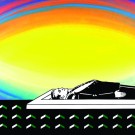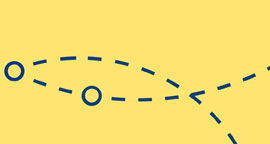Centre for Contemporary Culture at Palazzo Strozzi
Palazzo Strozzi
Richard Deon

With pictorial works in different formats that interact with the surrounding space, Richard Deon creates scenes of people and places that emerge like surreal paradoxes and play with images and situations that look familiar, using graphic forms and figures typical of civic handbooks of the 1950s.
Warning: A non-numeric value encountered in /var/www/vhosts/strozzina.org/httpdocs/admin/wp-content/plugins/lightbox-gallery/lightbox-gallery.php on line 443
- Exhibition view "American Dreamers", CCC Strozzina, Palazzo Strozzi, Firenze
Richard Deon, Various works, Courtesy the artist (foto Martino Margheri)
- Exhibition view "American Dreamers", CCC Strozzina, Palazzo Strozzi, Firenze
Richard Deon, Various works, Courtesy l'artista (foto Martino Margheri)
- Exhibition view "American Dreamers", CCC Strozzina, Palazzo Strozzi, Firenze
Richard Deon, Various works, Courtesy l'artista (foto Martino Margheri)
- Exhibition view "American Dreamers", CCC Strozzina, Palazzo Strozzi, Firenze
Richard Deon, Various works, Courtesy l'artista (foto Martino Margheri)
- Exhibition view "American Dreamers", CCC Strozzina, Palazzo Strozzi, Firenze
Richard Deon, Various works, Courtesy l'artista (foto Martino Margheri)
- Richard Deon
Storytown, 2007 - Acrilico su tela / Acrylic on canvas - 101,5 x 308,5 cm - Courtesy l’artista / the artist
- Richard Deon
Reseller, 2006 - Acrilico su tela / Acrylic on canvas - 193 x 246 cm - Courtesy l’artista / the artist
- Richard Deon
Weehawken 2, 2009 - Acrilico su tela / Acrylic on canvas - 147 x 119 cm - Courtesy l’artista / the artist
- Richard Deon
Outside Context, 2009 - Acrilico su tela / Acrylic on canvas - 52 x 49,5 cm - Courtesy l’artista / the artist
- Richard Deon
Madam I’m Adam / È fedel: non lede fe, 2010 - Acrilico su tela / Acrylic on canvas - 167,5 x 693,5 cm - Courtesy l’artista / the artist
Richard Deon’s work is deeply inspired by his childhood education when he was taught history from outdated American social studies textbooks that included illustrations reflecting the so-called “consensus history” of the 1950s in the United States. A major influence for the artist has been the book Visualized Civics, published to teach – through illustrations and text – social behaviors and concepts to the young generation of American citizens of the time.
Through Deon’s contemporary use of imagery found in Visualized Civics, the original scenes from the book lose their rational, didactic meaning. What remains are isolated figures and structures assembled into new scenarios through visual and conceptual collages that can be defined as a sort of social surrealism. Deon’s works reflect a language based on recursive imagery, and while always identical in form, the key figures change meaning in relation to the context of each new work.
Among the recurring imagery that can be identified is the figure that the artist calls “the Subject” who is always shown in stiff profile, either standing up or lying down. “The Subject” appears in Weehawken 2, whose title is a reference to Jersey City, a town famous for its view of Manhattan. The figure is also present in a work whose title Death in the Long Grass quotes a famous adventure book, and where Deon depicts a mysterious ritual. Another recurring image is “the Object”, a construct in the shape of a plane with an irregular silhouette. “The Object” appears both independently (such as in Yonkers) and also as an element within other works. Deon’s most recent work, Quick Response Squadron, is based on powerful imagery of World War II fighter planes where the artist has integrated the figure of “the Subject” as part of the body of the aircraft.
The conformity promoted in the 1950s through familiar and reassuring images is deconstructed in Deon’s work and represent paradoxical conditions of today’s society, where relativism and individualism have become the new and uncertain principles of our lives.
Richard Deon (1956, Potsdam, NY, USA; lives and works in Dover Plains, New York) creates paintings, prints, and sculptures composed of a group of primarily black-and-white motifs, recognizable characters, universal shapes, and historical themes that he presents in confusing juxtapositions creating surreal scenes. His precise, editorial eye developed in his second career as a graphic designer spills over into his art. He studied at the School of Visual Arts in New York. His recent solo exhibitions include: (2008) Paradox and Conformity: Paintings and Prints by Richard Deon, Gibson Gallery, Potsdam College, Potsdam, NY; (2009) Paradox and Conformity: Paintings and Prints by Richard Deon, Daum Museum of Contemporary Art, Sedalia, MO; Paradox and Conformity: Paintings by Richard Deon, The Azarian McCullough Art Gallery, St. Thomas Aquinas College, Sparkill, NY; Stare Decisis: Paintings And Prints by Richard Deon, Earlville Opera House, Earlville, New York; (2010) Richard Deon: Paradox and Conformity, Hudson River Museum, Yonkers, NY; Paradox and Conformity: Paintings and Prints by Richard Deon, Olin Art Gallery, Washington & Jefferson College, Washington, PA; (2011) Richard Deon: Paradox and Conformity, Foreman Gallery, Hartwick College, Oneonta, NY; Richard Deon: Paradox and Conformity, Arts Center of the Capital Region, Troy, NY. Recent group exhibitions include: (2005) T-Zone, Smack Mellon Gallery, Brooklyn, NY; (2007) Lineal Investigations, Housatonic Museum of Art, Bridgeport, CT; (2008) Seven: Out of this World, Rockland Center for the Arts, West Nyack, NY; Hudson Valley Invitational, Van Brunt Gallery, Beacon, NY; (2011) SGI International Conference billboard competition, St. Louis, MO.
















